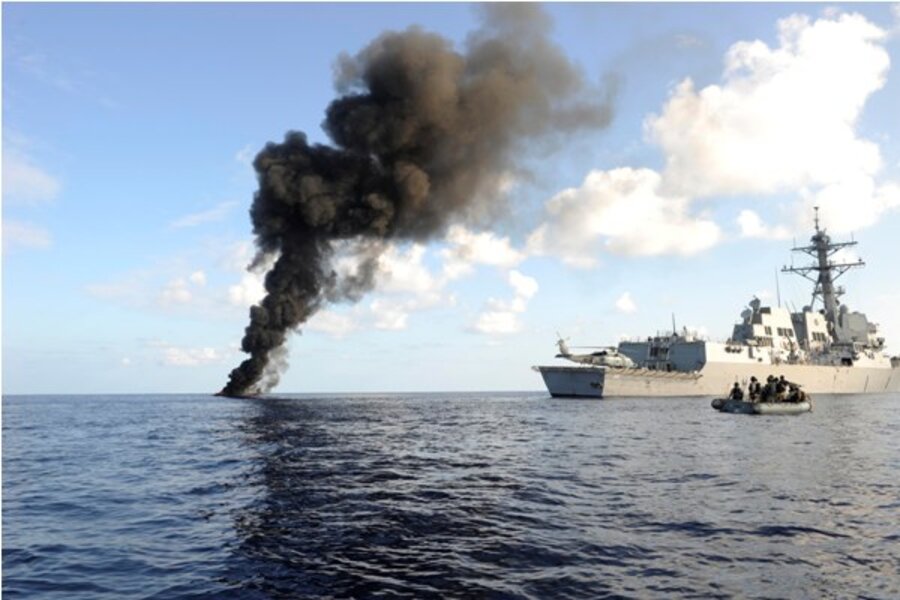Suspected Somali pirates more active, but US Navy fighting back
Loading...
| Washington
With the monsoon season mostly over off the coast of Somalia, the pirates are back. But so is the US Navy, which has confronted a dozen or so suspected Somali pirates in two separate incidents in dramatic fashion this week.
The US and Swedish navies intercepted an attack on a Sierra Leone-flagged tanker, the MV Evita, taking direct fire from three pirate skiffs floating northwest of the Seychelles in the Indian Ocean March 31.
The Evita signaled it was under attack, and, working together, a Swedish patrol craft along with a helicopter from the USS Farragut located the pirate skiffs, and found grappling hooks and fuel drums aboard the boats, along with 11 pirates. Once it was determined that the 11 pirates would no longer be able to carry out attacks, Navy officials sunk their largest skiff and sent them away.
The incident preceded a separate one the Navy reported Thursday, in which a pirate skiff began firing on the USS Nicholas in the same region. The frigate fired back, halting the skiff, and three pirates were arrested. Two more individuals were apprehended nearby.
Weather a factor in pirate activity
The increase in activity is the result of more seasonable weather, as the monsoon season there winds down. But it’s also due to more patrols by the US and a coalition of other navies that have pledged a stronger presence in the area in the face of greater pirate impact on the shipping industry. The International Maritime Bureau in Kuala Lumpur and the UK Maritime Trade Operations office in Dubai coordinated with the Evita and coalition navies.
“The pirates have become bolder and are attacking ships further away from the Somali shores,” said Rear Adm. Bernard Miranda of the Singapore Navy, commander of the international task force patrolling those waters. “This makes it even more important for all stakeholders to play their role and work closely together to deal with the piracy problem.”
But with the new season comes old questions – how to stop piracy and what to do with the pirates who are apprehended.
Despite the heavy international presence, it remains unclear how small bands of determined criminals with little to lose and a lot to gain can be stopped.
Ransoms drove up insurance premiums
Many commercial shipping companies had paid ransoms to the pirates, considering it almost as a cost of doing business in the region. As the attacks became more dangerous and insurance premiums for shipping companies began to rise, those ships have started to take steps to mitigate the ships' vulnerabilities.
Ultimately, however, the root of the problem is ashore, in Somalia, say many experts. Little political will exists in the US or elsewhere to commit to operations there.
Meanwhile, legal challenges mount.
The decision to let the 11 pirates go free in the Evita incident reflects the reality of the piracy problem: The average perpetrator is a low-level criminal, probably from Somalia, whose removal from the seas does little to change the dynamic. Arresting them and taking them back to face charges in Kenya or anywhere else is costly and time-consuming.
The five pirates apprehended Thursday after attacking the Nicholas remain on board the ship as American legal officials determine what to do with them, according to Lt. Pat Foughty of the Navy’s 6th Fleet in Bahrain.
The ship remains several hundred miles west-northwest of the Seychelles.





